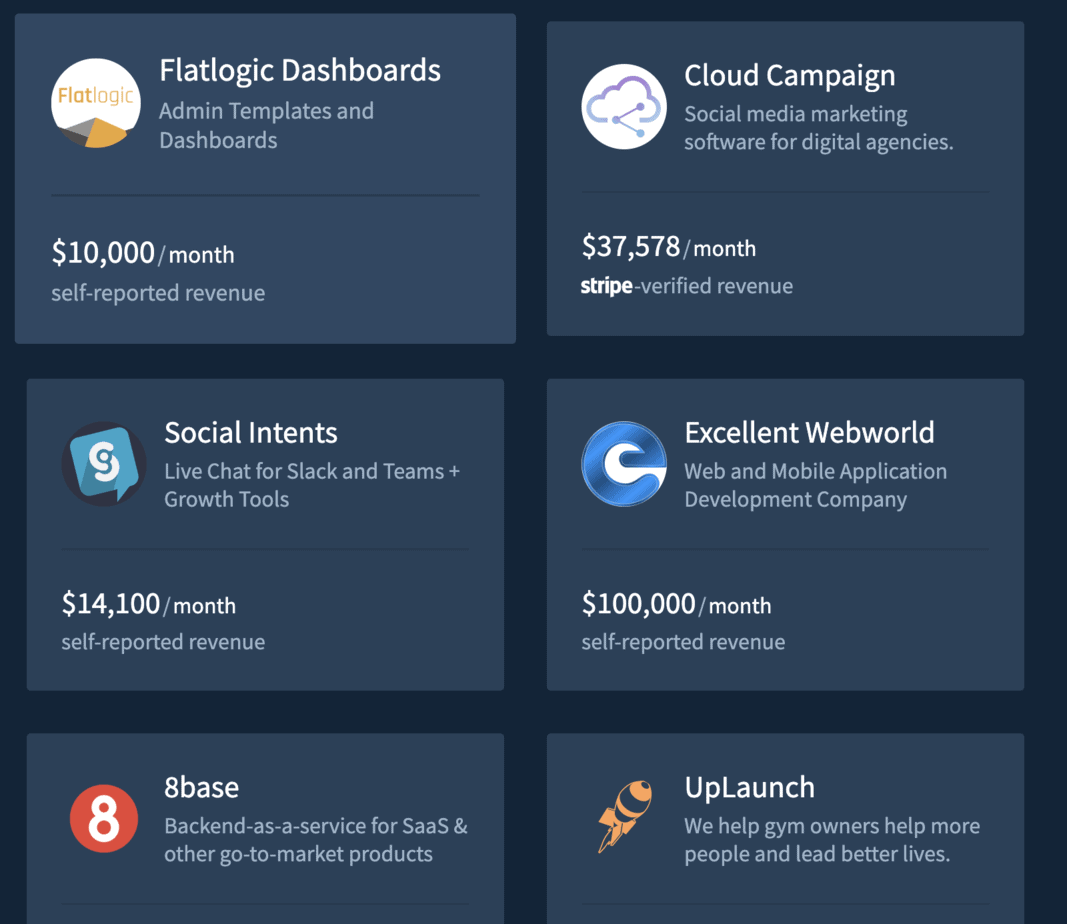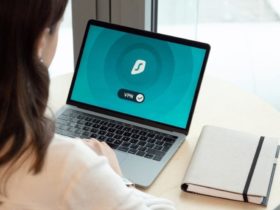Note: This post may contain affiliate links which means if you click on a link and purchase an item, we will receive an affiliate commission at no extra cost to you.
Back in 2017, I quit my job in Silicon Valley and embarked on a journey to build enough digital passive income to financially retire.
Since achieving this goal, I’ve received significant interest from readers and people in my network for info on how they can achieve similar results.
So here’s my absolute best effort to condense 15 years of learning into a free blueprint for how you can build financial freedom!
Table of Contents
I Believe In You, And You Should Too
Why Would You Want To Build A Passive Income Business?
This might seem like a dumb question to many but I’m going to answer it anyway.
My core philosophy is that if you’re able to make enough money to never have to work for or think about money ever again, then it’ll be much easier to live a purpose and happiness-driven life. Hence the name of this site (Freedom Is Everything).
While this post will get a lot more attention than my guide to minimalism, I believe that learning to enjoy living with less is actually more important than making more.
But that’s another topic and you can read that guide if you want to learn more about that!
Who Am I and Why Am I A Credible Source?
My name’s Cam Woodsum and I’m a nomad/entrepreneur who owns a portfolio of content/affiliate websites that are valued at ~$1M.
I spend ~30 minutes per month on these passive businesses and I now spend my time traveling the world, surfing, and building mission/impact-driven content sites to help people improve their lives (like this one!).
Since 2017, I’ve started ~15 different businesses in many different fields including content/affiliate; e-commerce (dropshipping and arbitrage); and scalable service businesses (social media agency, international exporting, and consumer bill negotiation).
Long story short is I’m a generalist both in my knowledge of many different types of digital businesses and in my skill-set/abilities (ideation, strategy, building websites, growth/marketing, operations, sales, analytics, recruiting/hiring, and automating complex processes).
You can read more about my story in this post.
Why Am I Writing This Guide?
My motivation here is simply to help. Making money from this site is not a priority, I’m living out my dream and I’m trying to help other people live out theirs! 🤙
Related Resources I Also Recommend Reading
- How To Teach Yourself New Things Via The Internet
- Becoming an expert at teaching yourself new things is one of the most important skills you can harness in your life.This guide is a blast-off to help you get going but it isn’t a replacement for the skill of finding valuable info on the internet as you go deep in a specific space.
- The Psychology of Success (Understanding What It Takes To Be Successful)
- I’ve spent more than a decade closely studying successful people to understand how they’ve achieved success and how I can set myself up to be successful.This is what I wish someone would’ve shared with me.
- Growth vs. Fixed Mindset: One of Life’s Most Important Concepts
- I believe that having a growth mindset is one of the most important things in life and if you aren’t growth-minded then it will be very difficult to achieve ambitious goals.
- The Best Entrepreneurship Learning Resources (What I Wish Had Existed When I Started)
- For general guides to marketing, sales, entrepreneurship philosophy, etc. I highly recommend going through this comprehensive resource list that I put together.
- Outsourcing Guide: How To Hire Virtual Assistants, Freelancers & Consultants and The Best Guides On Building Remote Teams
- If you’re planning to build a remote company, definitely read these guides.
What Is A Digital Passive Income Business?
This guide is solely focused on digital businesses that take little to no money to start (because this is my specialty!).
This guide isn’t about:
- Making money if you already have money (i.e. via investing in the stock market, real estate, etc.)
- Get rich quick schemes (i.e. via penny stocks, forex, online surveys, multi-level marketing, etc.)
- Building venture capital or other investor-backed businesses (there are already lots of great guides about this)
This guide isn’t a substitute for hard work:
I wish I had the magic pill to help you make millions of dollars without any effort or skills, but I don’t…
I spent ~2.5 years working 60-80+ hours per week to build my passive income portfolio (and that was after spending a decade working hard and failing).
When I think of creating passive income from scratch, I think of working very hard up front to generate long-term returns. And while this guide has information that will be extraordinarily valuable to you on your journey, it is not a substitute for hard work and the (sometimes) difficult ups and downs of being an entrepreneur.
I don’t have any grandiose promises other than this is a blueprint for how you can turn blood, sweat, and tears into a significant source of recurring passive income.
But Why Not Just Build A Large, VC Backed Business?
I’ve found that the more partners you have, the more complicated things become. In the words of one of my buddies who runs a VC-backed business, “I’m getting grey hair trying to hit the never-ending milestones.”
My life is optimized around freedom and I believe that making money is one aspect of living a great life, not the main goal. Venture Capitalists are focused on generating financial returns for their investors, so if your goals aren’t financially driven (as mine aren’t), then raising venture money is not a good fit.
I’m much more interested in working for a few years to become a retired millionaire than working for a decade to try to become a billionaire.
Many people would disagree with my views on this and that’s perfectly okay. 😎
How To Come Up With Business Ideas
The following section will cover the most common types of passive income businesses but I want to first provide some clarity on how to come up with business ideas.
This will give you a framework to start identifying and thinking about interesting opportunities.
Keep A Digital Note With All of Your Ideas
I used to really struggle with coming up with business ideas, now I have way more good ideas than I could ever start.
What changed? I quit my job and started traveling, which dramatically freed up my mind space, and increased my creativity by 100x. I then started obsessively thinking about ideas and jotting them down in a note (in Evernote).
I highly recommend that you use some sort of digital system to file away ideas that pop into your head.
The 3 Types of Business Ideas
This article is an absolute must-read: Paul Graham’s post about coming up with startup ideas.
Essentially every business idea is formulated in one of three ways (read through all of them because there are key general tips in each one):
1. Copy, Mimic, or Build A Better Version of an Existing Business
This is the easiest, least talked about, and most under-appreciated way to start a business so I’m putting it first. It’s also the primary ideation concept that I recommend to potential founders looking for ideas.
Founders usually tell sexy and elaborate stories of how they came up with their business idea but when you boil it down, they frequently just copied, mimicked, or built a better version of an existing business.
Why don’t people talk about this? Because very few people are honest enough to admit that they copied someone else.
Examples of businesses that fit this profile:
- Google: built a better search engine (Altavista was the leading search engine at the time)
- Facebook: built a better social media network (started after MySpace and Friendster)
- UberX and Lyft: They both copied Sidecar, the company that invented ridesharing
- Salesforce: built a better customer relationship management software
- DoorDash: started ~2 years after Postmates (after the Founder/CEO worked for Postmates’ lead investor)
- Rocket Internet: a global startup lab that copies US businesses but launches them in international markets (has started many multi-billion dollar businesses)
- Lime: copied Chinese bike-sharing startups
- Instagram Reels: a copycat of TikTok
- Instagram Stories: a copycat of Snapchat
Most of these businesses weren’t first to market, they just out-executed their competitors.
And most of my business ideas have come from spotting other businesses that are doing well that I believe I can out-execute or where I can execute well enough to take a share of the market.
If you’re looking for the simplest way to come up with business ideas, I strongly encourage you to study existing digital businesses and either copy, mimic, or build a better version of something that already exists.
Original ideas are way overrated, especially if you’re early in your entrepreneurial journey. For many people, I think the best and easiest path is to study existing businesses and find something that interests you and where you have the skill-set to execute well.
Recommended Reading: How to find existing passive businesses that are making money.
If you want to see how I research sites and what tools I use to do this, watch the below video!
2. Solve A Problem
This is typically what people recommend to potential entrepreneurs: “Find a pain point or problem and solve it.”
And this is good advice, because if you solve your own pain point or a pain point of a business then there’s a decent likelihood that many other people/businesses have the same pain point.
This is how I came up with the idea to start a consumer bill negotiation business. My parents asked me if I could help lower their cable bills and after saving them $2,000/year, I realized a lot of other Americans were also likely overpaying on cable bills.
Examples of some broad questions that various businesses are currently trying to solve:
- Helping people find cheaper hotels/car rentals/flights
- Helping people save time by ordering food/grocery delivery
- Helping people keep in better touch with their personal networks
- Helping people find information easier on the internet
Read Paul Graham’s article to go deeper on this concept or just start thinking about what problems you can solve for businesses, in your life, or in the lives of people around you.
3. Find An Opportunity
This concept is deeply related to solving a problem but I’m separating it because it’s a slightly different ideation process. New technologies, new consumer interests/behaviors, and other changes in the world create constant business opportunities.
And people who spot these opportunities early can use that to create massive businesses.
Examples of finding opportunities:
- People who created mask-related businesses during the COVID pandemic
- Remote.com which is a global HR/payroll service supporting the shift to remote work.
- NotionMastery, a digital product to help people use Notion more effectively
Read my guide to tracking global trends and opportunities to go deeper with this concept and I also HIGHLY recommend going through the different new-age digital business models explained by Trends.vc.
Trends.vc explains and provides examples of paid online communities, paid newsletters, income sharing businesses, and tons of other new business models.
Do You Need To Be Passionate About Your Business Idea?
Some people say that you HAVE to chase your passions and you should only work on things you’re passionate about. Others say that that advice is bullshit and that you should do things that you’re good at.
The simple truth is that there isn’t one way to do things and that there aren’t any rules.
Why? Everyone gives advice from a place of personal bias based upon what has worked for them so it’s best to take every piece of advice with a grain of salt.
Sure it will help a lot if you’re passionate about what you’re working on and if you have the skill-set to execute what you want to do, but these aren’t mandatory requirements.
Most of my most successful business ventures have been in areas that I’m not passionate about and where I had very few skills before getting started and learning along the way.
What Are The Most Common Types of Digital Passive Income Businesses?
Essentially any passive business is going to require a significant upfront time investment to get it going.
When I describe passive businesses, I’m referring to businesses that become passive once they’re at scale.
The two basic ways to create a fully passive business are:
- Get the business up and running and then replace yourself via hiring people so that you don’t need to do any work
- Build something that requires close to zero ongoing effort to maintain (i.e. a book, content website, or other content product)
When a business is at scale in either of these two phases then a business owner can either sit back and collect cash or invest their time into growing the business.
For this latter reason, it can be hard to pinpoint exactly how passive a business is because many people continue to invest their time into growing it.
Enough of me talking, let’s get into the types of sites.
1. Content/Affiliate Website
What Is It: Starting a blog/website with information and making money by linking to other sites where people buy things (and getting paid a commission for those purchases). These sites usually get traffic from Google search but some sites generate traffic from ads or social media.
Examples of Sites:
NerdWallet.com: $500M+ personal finance site
Orbitz: Sites like Orbitz, Kayak, Priceline, etc. are essentially affiliate websites because they don’t supply any products, they’re pure information websites that make 2-40% of the consumer’s purchase price.
Top Ten Reviews: Review website
Wirecutter: NY Times product promotion/review site
The Points Guy: Travel content site
General Thoughts:
I love these types of businesses because you don’t have any customers and there aren’t any real-time operations so it’s extremely passive.
Pros:
- These tend to be very low-cost, pure profit businesses.
- Much more defensible than product-based businesses because it’s generally more difficult to unseat websites in search results.
Cons:
- Search-driven businesses generally take more time to scale than ad-driven businesses so the ramp up time for a SEO content site can be 6-12 months (or possibly longer).
- Websites that are powered by search are at the mercy of Google algorithm changes which can sometimes crush websites.
How It Becomes Passive:
These types of businesses are generally passive from the beginning because you don’t have any operations or customers.
Best Learning Resources (More General Resources At The Bottom of This Guide):
- Starting An Online Business: The Ultimate Guide for 2021
- How To Grow A Blog From 0 To 150k Visitors In 8 Months (Free course. There’s also a paid course that I highly recommend and don’t have any affiliation with. This is my favorite resource on scaling a content site by far.)
- Skimlinks: Affiliate program that allows you to install one line of code on your website and turn every link on your website into an affiliate link. Has relationships with 25k+ merchants and it’s what I use every time I start a new affiliate site.
- How To Build Websites From Scratch
- Digital Tools I Use (Ahrefs, Grammarly, Alexa, Keywords Everywhere, SEO Quake, WhatRuns)
- The Definitive Guide To SEO In 2021 (One of the best blogs on SEO, tons of great articles on here.)
- The Wiki Strategy: How to Grow Your Blog to 100k+ Monthly Visitors by Nat Eliason (also an amazing read)
- Learn Affiliate Marketing: A Beginners Step By Step Guide
- How To Create A Profitable Affiliate Site (+50 Examples)
- 22 Successful Affiliate Website Examples Making $10M+
- How To Start A Niche Website That Can Make $3k/month
- How To Make Money With ClickBank In 2021
- 21 Real Life Examples Of Successful Affiliate Marketing Websites In 2021
- Other Content Site Case Studies
- The Story of NerdWallet’s $520M Content Empire (15 Mins) https://thehustle.co/nerdwallet-maggie-leung
- 7 SEO Ideas From NerdWallet’s Success (10 Mins) https://www.thehoth.com/blog/nerdwallet-seo/?utm_campaign=Submission&utm_medium=Community&utm_source=GrowthHackers.com
- 6 NerdWallet Strategies (5 Mins) https://www.linkdex.com/en-gb/inked/nerdwallet-organic-search-strategy/
- Buffer Blog to 1.5 Million Readers (25 Mins) https://blog.bufferapp.com/buffer-blog-one-million?utm_campaign=Submission&utm_medium=Community&utm_source=GrowthHackers.com
- Skim: UpWorthy, A Case Study (20 Mins) https://growthhackers.com/growth-studies/upworthy/
- Key Takeaway: People love sharing maps. How We Scaled From 0 to 100,000 Blog Visits (20 Mins) http://yesoptimist.com/content-marketing-seo-case-study-the-trifecta-strategy/
- How Kissmetrics Scaled Content (1 Hour) https://www.dropbox.com/s/7red9bsyfi9dvkp/The Content Marketing Playbook.pdf?dl=0
2. Online Courses / Selling Information Products
What Is It: Online courses and info products are one of the highest margin businesses that exist. It’s also why this has become a hot trend and why so many people are selling courses.
If you have in-demand knowledge/skills that other people would be willing to pay to learn, this is a fantastic business model.
A common pathway is for people to start out as a coach or consultant and then transition to selling courses once they figure out how to best help their target audience.
Examples of Sites (courtesy of Trends.vc):
- Better Sheets
- 30×500
- Profitable Newsletters
- Everyone Can Build a Twitter Audience
- Building a Second Brain
- SEO That Works
- Sales For Founders
- Newsletter Accelerator Course
- Your First Rental Property
- Design for Developers
General Thoughts:
Highly passive, highly scalable, highly profitable. Simply put these are phenomenal businesses. These tend to scale much faster than content/affiliate businesses because you can grow via ads and other paid marketing.
How It Becomes Passive:
These types of businesses are generally passive from very early on because once you create your information product and figure out how to acquire customers at scale, you simply sit back and collect profits.
Best Learning Resources (More General Resources At The Bottom of This Guide):
- Starting An Online Business: The Ultimate Guide for 2021
- The Ultimate Guide on How To Start An Online Course Business
- The Best Guides To Becoming A Freelancer or Consultant
- Information products (beginner’s guide + best selling ideas)
- Trends.vc Guides To: Online Courses, Digital Products, Digital Products #2
- Other Guides To Building & Selling Online Courses: Guide 1, Guide 2, Guide 3
- Other Guides To Info Products: Guide 1, Guide 2
- How I Started a $400,000 Side Business in 1 Month (for Free)
- Read Expert Secrets by Russell Brunson (fouinder of ClickFunnels)
3. E-Commerce (Private Label, Wholesale, Amazon FBA, Arbitrage, Dropshipping, Print On Demand)
What Is It:
E-Commerce businesses are defined as businesses that sell goods online.
Private label refers to creating your own products under your brand and selling them on Amazon, your website, or anywhere else.
Wholesale refers to buying someone else’s products in bulk and then selling them (frequently on Amazon).
Amazon FBA refers to selling either private label or wholesale products on Amazon via Amazon’s Fulfillment by Amazon program (aka Prime). This means that you ship products in bulk to Amazon’s warehouse where they store them and handle all shipping for you.
Arbitrage refers to exploiting marketplace inefficiencies by buying things for less from one store and selling them for more on another store (i.e. buying discounted goods at Marshall’s or on eBay and re-selling them on Amazon).
Dropshipping is a type of E-Commerce business where you don’t actually own any inventory but rather someone purchases something from your store, then you purchase the product from a supplier who ships it directly to the consumer.
Print on Demand refers to apparel businesses where the piece of apparel isn’t actually printed until the customer has bought the product. The customer buys the product, then a third party company prints and ships the product to the customer.
Examples of Private Label E-Commerce Sites:
GymShark
FashionNova
Allbirds
Adagio Teas
Examples of Dropshipping Sites:
Best Choice Products
Meowing Tons
Daily Steals
Pet Boutique
Bluecrate
ZZSales
Examples of Amazon FBA Sellers:
The World’s Largest Amazon FBA Sellers
Examples of Arbitrage Sites:
Most of these businesses are quietly run through marketplaces so they don’t have their own individual sites.
Examples of Print On Demand Sites (Courtesy of MoFluid):
TAMGA Designs
StomaStoma
Iconspeak
Classic Dad
General Thoughts on E-Commerce:
I much prefer information businesses to product businesses because they’re simpler and I’ve found them easier and more cost-effective to scale.
General Thoughts on Private Label E-Commerce:
There are some massive E-Commerce brands (including the likes of Nike, Adidas, etc.) and people love buying things so if you can create a product that people want then there’s significant upside.
The big challenge that I see in E-Commerce is copycats/defensibility. When a product goes viral on Kickstarter or elsewhere, Chinese manufacturers almost instantly create a copycat and frequently beat the inventor to market.
Creating a strong brand, innovative marketing and/or a superior product seem to be critical to overcome the fierce competition in this space.
Of all of the E-Commerce opportunities, private label seems to be the most defensible and generally the best opportunity because you can build a long-term asset instead of building a short-term cash cow.
The big challenge that I see with these types of businesses are inventory costs though. As you scale, you have to buy more and more products in bulk before customers buy the product which leads to gambling money on inventory. Compared to information products, this is a much more expensive business to scale.
General Thoughts on Wholesale E-Commerce:
My thoughts here are similar to my thoughts on arbitrage businesses. Any product business where you don’t have the defensibility of a brand makes it very easy for others to compete with you.
As soon as you start doing well, you’ll likely face fierce competition because marketplace sales are very trackable.
General Thoughts on Amazon FBA:
As of 2019, there were “approximately 25,000 Amazon sellers making over $1 million worth sales and 200,000 Amazon sellers making over $100,000 worth sales” so it’s undeniable that there are massive opportunities on Amazon (info source).
I generally believe that product businesses are higher competition and much more capital intensive to scale but I’m biased based upon what I’ve been successful with.
General Thoughts on Dropshipping:
There are also large dropshipping sites that are worth millions of dollars and many stores (including Zappos) started out as dropshipping stores.
My issue in the past with dropshipping has been that the barrier to other people competing with you is very low so it can be difficult to maintain scale unless your marketing is very strong. Dropshipping stores can be fast cash cows though, especially if you find a scalable marketing channel.
I personally know people who have built dropshipping stores to $40-50k+ per month so the profits in this space can be very real.
General Thoughts on Print On Demand:
My thoughts here follow my other thoughts on private label e-commerce: I would focus on building a brand. It makes sense to start a fashion brand as print on demand because you can launch with many different products at no upfront cost.
General Thoughts on E-Commerce Arbitrage:
I used to run an E-Commerce arbitrage business that was making a $2k+ per month but the challenge was that marketplace sales (on eBay/Amazon) are very trackable so 2-8 months after a strategy started working well for me, other people would jump in and compete.
While some people have built decently sized businesses in this space, I’ve found arbitrage businesses to be flash in the pan money where competition follows any success and it’s close to impossible to build a long-term asset.
Early in my entrepreneurship journey, I chased fast cash opportunities but now I’m purely focused on building long-term assets.
How It Becomes Passive:
Dropshipping and arbitrage businesses are both very passive and don’t require capital to get started. Private label E-Commerce could be passive from the beginning if you’re only selling on Amazon
Best Learning Resources (More General Resources At The Bottom of This Guide):
- Starting An Online Business: The Ultimate Guide for 2021
- Private Label vs Retail Arbitrage vs Dropshipping vs Wholesale – 8 Ecommerce Business Models Compared
- eCommerce: The Ultimate Guide To Starting And Scaling An Ecommerce Business
- Dropshipping: The Ultimate Guide To Dropshipping on Shopify
- The Best Guide To Selling On Amazon FBA (Written Guide or Video Guide)
- Other Guides To Selling on Amazon: Guide 1, Guide 2, Guide 3, Guide 4
- Print on Demand Guide
Other Businesses That Can Become Passive:
Any business that you can scale and then remove yourself from day-to-day operations can become passive. So the possibilities are endless.
Here are some other ideas:
- Coaching/Freelancing (which can transition into a course or an agency)
- This is probably the easiest and fastest way to monetize your existing knowledge/skills.
- The Best Guides To Becoming A Freelancer or Consultant
- How to Build a Digital Marketing Agency for Passive Income – The Matt Laker Method
- Making the transition from freelancer to agency
-
Service businesses (including local, non-remote businesses)
-
A job where you hire someone else at a cheaper rate to actually do the work
- The ethics on this are a bit hairy but I know people who have replaced themselves in their day job with a contractor that they pay a lower rate than their company is paying them (and they pocket the difference). This can work for systemized work like customer service, recruiting, etc.
- Content Creator
- Being a content creator isn’t really a passive business unless you get to a significant scale and then just stop working.
- Paid online communities
- Paid online communities are a growing trend right now, click the above link to learn more.
- Paid Newsletters
- Paid newsletters are another growing trend right now as it’s an easy way to monetize adding ongoing value to subscribers.
- Lead Generation
- Create a website that generates leads for other businesses. Very passive once you scale since you don’t have direct customer relationships.
Resources On Executing And Scaling:
- The Best Entrepreneurship Learning Resources (What I Wish Had Existed When I Started)
- For general guides to marketing, sales, entrepreneurship philosophy, etc. I highly recommend going through this comprehensive resource list that I put together.
- Outsourcing Guide: How To Hire Virtual Assistants, Freelancers & Consultants and The Best Guides On Building Remote Teams
- If you’re planning to build a remote company, definitely read these guides.
Other Great Passive Income Resources:
How To Make Passive Income by Nat Eliason (one of my favorite thinkers, I highly recommend reading this)
The Bootstrapper’s Handbook: learn to bootstrap profitable startups the indie way (by Pieter Levels, founder of NomadList and one of the most famous solopreneurs)
The Four Hour Workweek by Tim Ferriss (one of the most famous passive income books ever written)
Final Thoughts:
Starting a business is a crazy, wild adventure that will likely be one of the hardest, most rewarding, and most intense experiences of your life. Noting worth doing in life is easy, so put your down and make it happen!
If you have questions or want to chat about any of this, feel free to reach out to me via any social media platform @CamWoodsum.









Leave a Reply
View Comments